Why consider the 1-6x when there’s also 1-4x versus 1-8x and even 1-10x scopes?
The 1-6x is a very popular LPVO configuration. It fills the gap between 1-4x and 1-8x scopes balancing out magnification needs without adding too much weight and cost. It also provides a balance between eye relief and eyebox requirements with decent optical performance at max power.
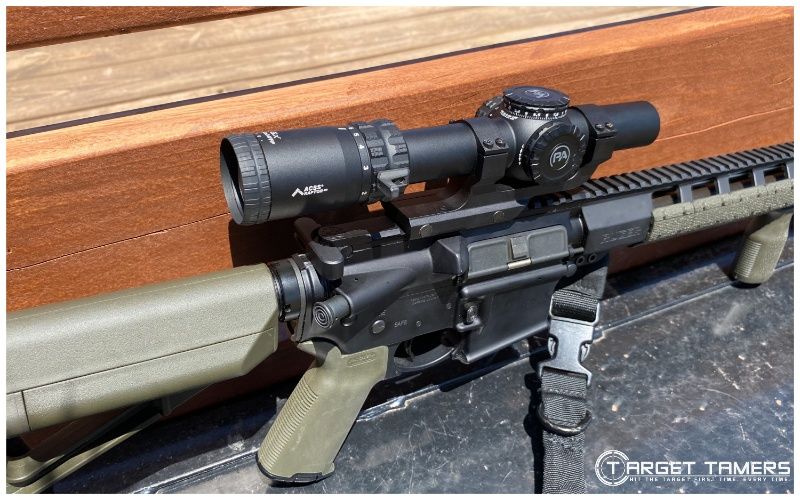
This lineup could be exhaustive with this configuration, so I hand-picked some mass approved favorites to determine the best 1-6x scopes.
I compare cost, reticle options, weight, included accessories, and more to give you a better idea of how they stack up.
Why Trust Us?
After hundreds of hours of hand-testing scopes in the field and at the range, and thousands more hours researching and writing about them, we feel we earn the title of experts when it comes to optics!
We purchase as many of the optics for our tests as possible, and run them through their paces to make sure they will perform at the range and in the field.
Our combined decades of experience from hunting and target shooting, to big game hunting and competitions has been integral in putting together this round-up of the best 1-6x scopes & LPVOs.
Get the inside scoop on how we test optics here.
The Best 1-6x Scopes in 2024
1. Leupold VX-6HD – Best for Hunting
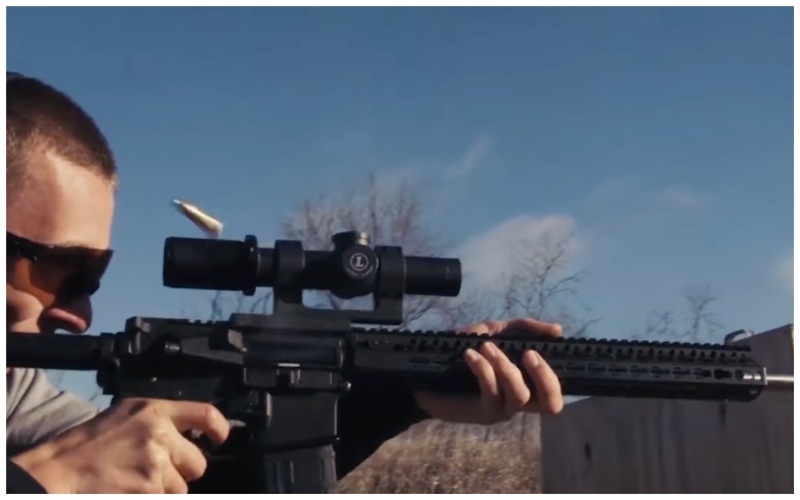
The VX-6HD is not a cereal box riflescope but a high-end model built for the hunt. What kind of hunts would use 1-6x? Dangerous game, bear, thick brush, and shots inside 100 yards but mostly around 40-70 yards. What you need is a thick, simple, SFP reticle scope for quick target acquisition. Sounds like the Leupold VX-6HD!
Pros:
- HD Performance optics
- CDS-ZL2 elevation dial
- Motion sensor tech
- Electronic reticle level
- Included accessories
Cons:
- Price
It should come as no surprise that for a Leupold made with high quality materials it comes with a “it hurts” kind of price tag. However, with the Professional-grade Optical System, HD performance, and Guard-Ion lens coating, the sight picture is exceptional from each edge of the FOV.
More-so, Leupold added a bunch of technology to the VX-6HD. It has MST (Motion Sensor Technology), so that you don’t need to remember to manually deactivate the illumination. It deactivates after 5 mins of non-motion but also reactivates when movement is felt.
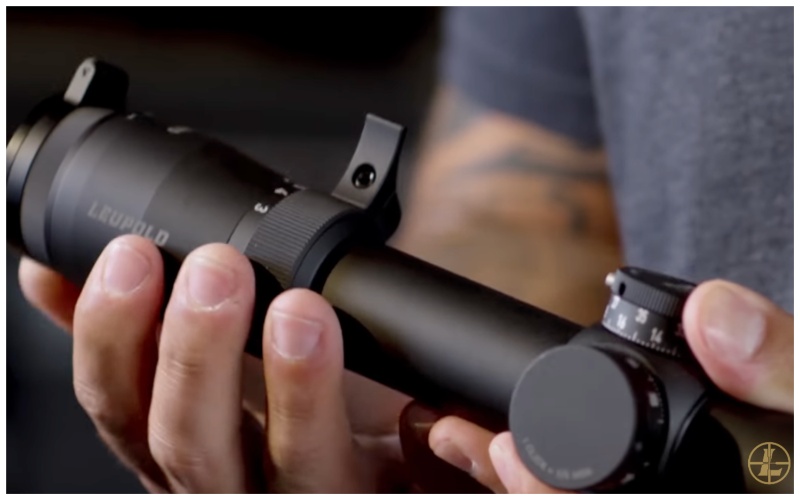
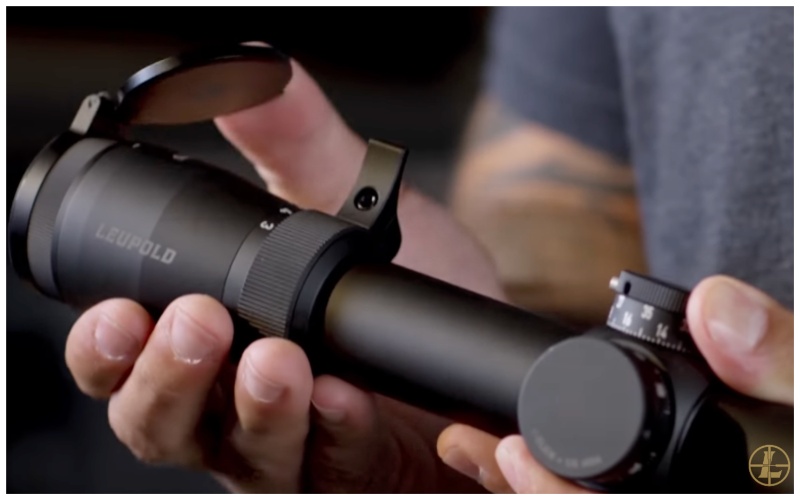
It also has an anti-cant level to keep things aligned. You can also opt to have Leupold make a custom CDS-ZL2 elevation dial for your setup! It's free of charge but costs for each dial after the first one.
The reticle is the Illuminated Firedot Duplex reticle. It’s in the SFP, has 8 illumination settings, and it doesn’t get simpler than that. Complete with ¼ MOA adjustments, a reversible throw lever, and included Alumina Flipback lens covers, the VX-6HD is really made for a broad range of applications.
Explore the comparison between 1-4x and 1-6x LPVO scopes to determine which one suits your needs best.
2. Primary Arms GLx FFP – Best FFP 1-6x
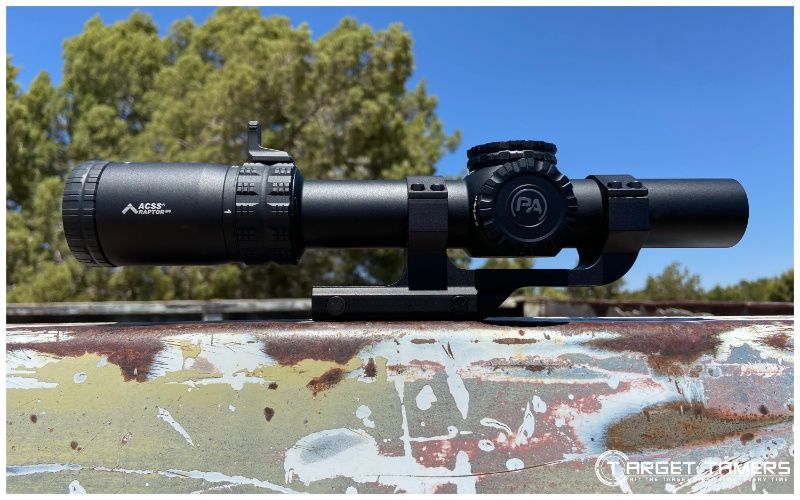
Overall, the Primary Arms GLx 1-6x FFP scope is one of my favorite LPVO scopes to date. The ACSS reticle works, there are turret cap options, it has AutoLive, and it’s tough.
Pros:
- ACSS Raptor M6 reticle
- Turret options
- AutoLive
- FFP reticle
- Long eye relief
Cons:
- Not daylight bright
Like the Primary Arms SLx scope, it doesn’t have what I’d call daylight bright illumination. However, I think the illumination is really intended for when it’s needed – low light, against shaded targets, or when indoors (dark buildings etc.). The etched reticle without illumination is highly visible. Another point worth mentioning is that the illumination knob also has intermittent off settings – so nice!
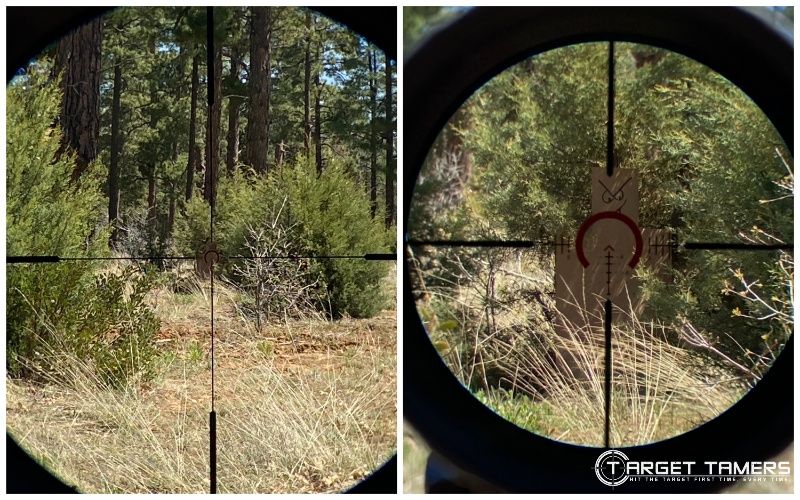
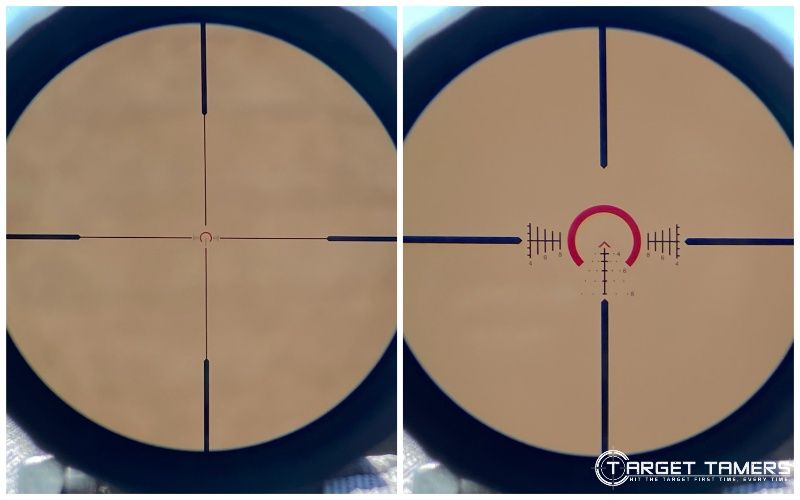
The AutoLive feature is motion sensor tech. It automatically deactivates the illumination after 3 mins of non-movement. When it detects motion, it switches back on. I always forgot that it had this because it was just ready whenever I shouldered it. It’s certainly helped the battery to last longer than I thought it would.
I’ve tested the auto ranging, tracking, and accuracy, and the GLx performs to the mark. The FFP reticle is larger at 1x than the field-tested Vortex Strike Eagle 1-8x LPVO. I like the size. I like that it’s in the first focal plane, and I like that it’s simple but has useful holdovers for both drop and wind.
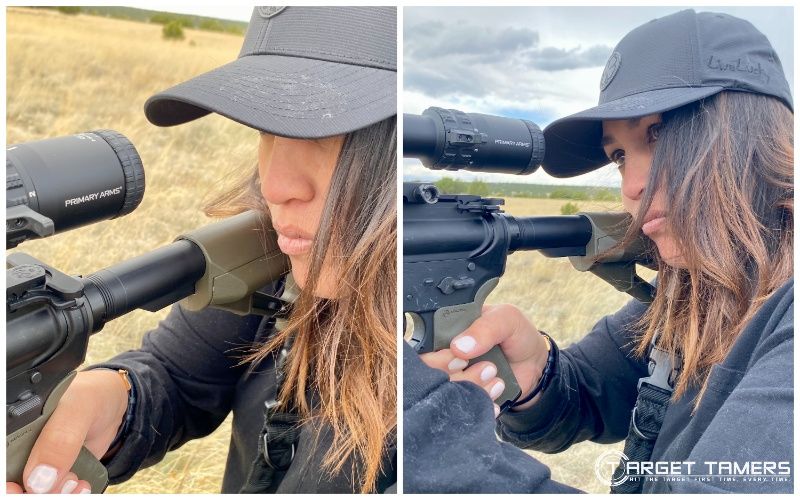
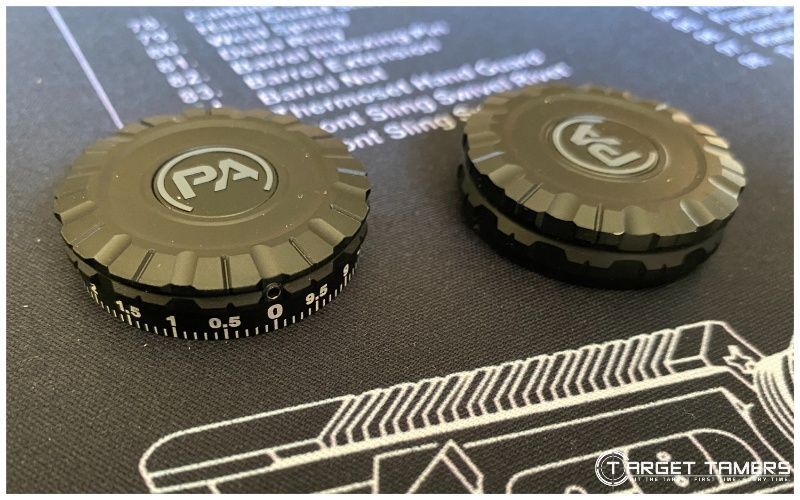
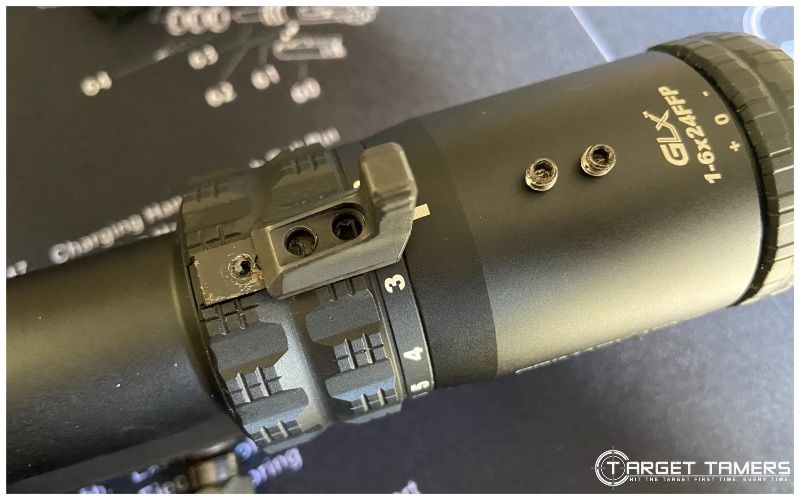
One thing I noticed that wasn’t to spec was the eye relief. Stated at 3.5-3.3”, I found it to be close to 5”! This was a very nice surprise and made things easy for situational awareness, staying in the eye box, and keeping my cheekweld.
The scope comes with a default standard cap for the low-profile turrets. For hunters and those of us worried about snagging, it’s perfect. When over-sized, exposed turrets are all the rage, the GLx keeps things simple. However, if you want an exposed MIL turret, the GLx comes with one too! There’s no way this 1-6x scope won’t fulfill the needs for multiple types of shooters!
3. Vortex Viper PST Gen II SFP – Best for AR-15
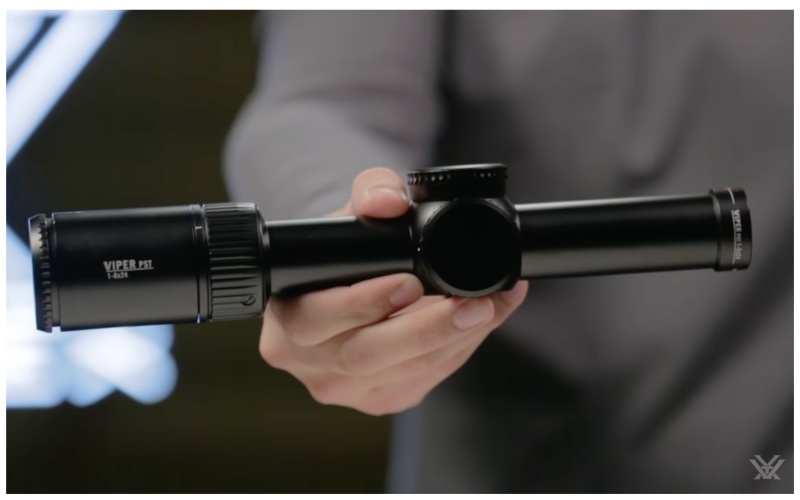
Though the Vortex Strike Eagle FFP is consistently compared against Primary Arm’s GLx scopes, I think the Viper PST is a better comparison. The Strike Eagle SFP would be good competition for the SLx though. Moving on with it, the Viper PST has features that you don’t see on the Strike Eagle FFP.
Pros:
- VMR-2 reticle
- SFP reticle
- Partial illumination
- XD elements
- Accessories included
Cons:
- Heavy
The Viper PST has low-profile capped turrets with the illumination knob featuring intermittent off positions. It doesn’t come with flip-up caps though like the field-tested Strike Eagle FFP does – just saying. The VMR-2 reticle in the Viper is in the second focal plane and remains the same size. This is needed since the illuminated center point is only 0.5 MOA in size!
There are both drop and wind holdovers in crosshair style, so I know many will prefer the simplicity and visibility of such a reticle.
The eye relief is good at 3.8”. Parallax is fixed at 100 yards which is standard, but the optics are better on the Viper than the Strike Eagle. The Viper has XD elements which eludes to the use of ED (Extra-low Dispersion) elements for maximum control over aberrations like color fringing.
Even though the Viper is on the heavy side for a 1-6x LPV at 22.7 oz, these types of scopes are generally heavy for their configuration, so it comes as no surprise. Overall, this is a scope I would recommend for various applications from CQB and patrol work if you’re not going to flip the bill on a Razor!
4. Swampfox Tomahawk II – Best Under $500
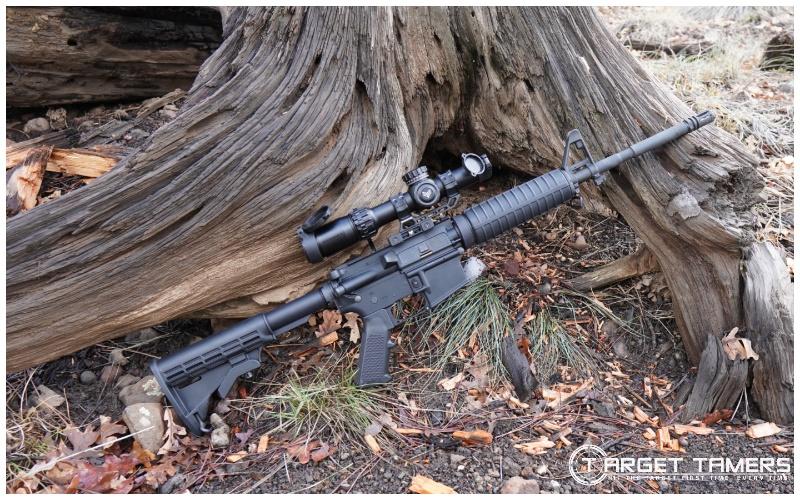
The Tomahawk II is an upgraded version of Swampfox’s now discontinued Tomahawk I LPVO. There’s a 1-4x model but I’ve been range-testing the 1-6x scope. The new improvements have put the Tomahawk II in a new quality class. I reckon it’s a mid-range scope priced as an entry-level one.
Pros:
- Great 1x
- SFP reticle
- 12 illumination settings
- Intermittent off
- Locking turret
Cons:
- Push mechanism could be stiffer
Part of the new upgrades include a push/pull locking elevation turret while the windage got capped. The older model didn’t have either even though they were exposed, so the changes here are much appreciated.
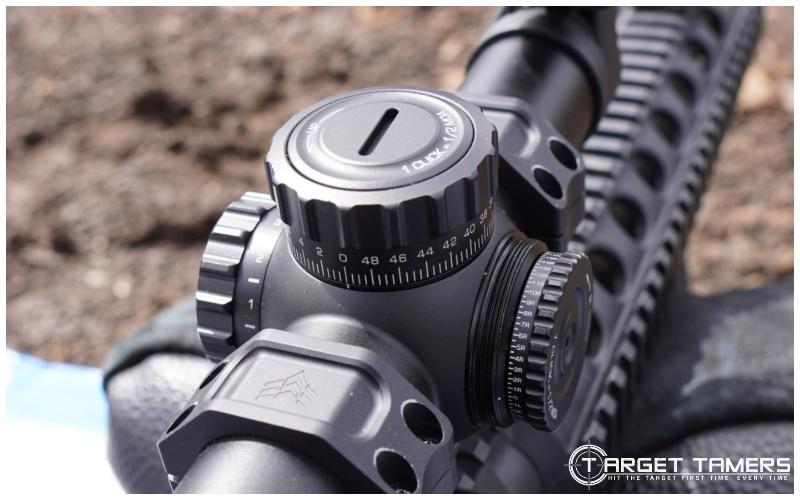
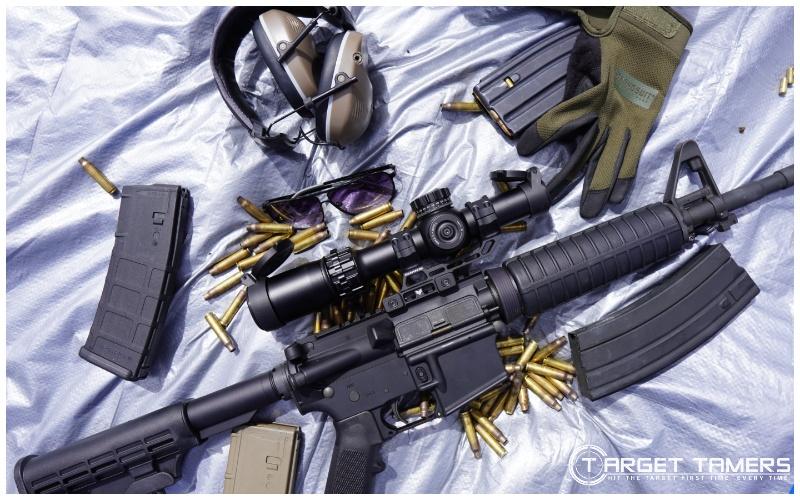
However, I do think that the ‘push’ part of the locking turret could be stiffer. I found it too easy to push it (lock it) while I was using it. Once I realized what I was doing, it wasn’t a big deal. I actually had a hard time finding something I didn’t like about the Tomahawk II so my criticisms can be considered extra critical.
The Guerilla Dot BDC reticle feels very like shooting with a red dot sight in a riflescope package. The 1x performance is extremely impressive – definitely one of the best I’ve tested. Shooting with two eyes open is beyond easy to do especially given the huge FOV… another thing that’s new to the Tomahawk scope.
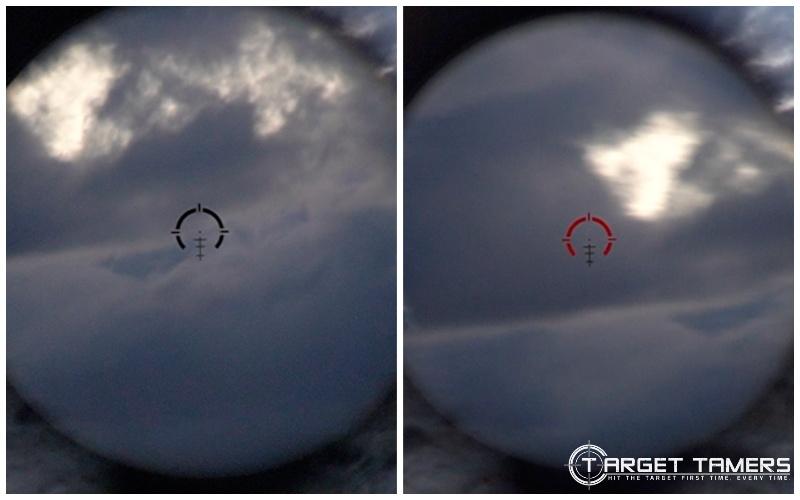
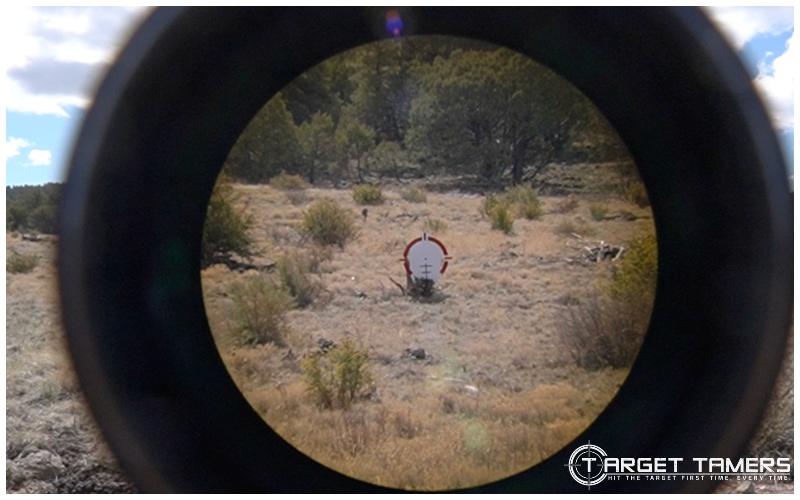
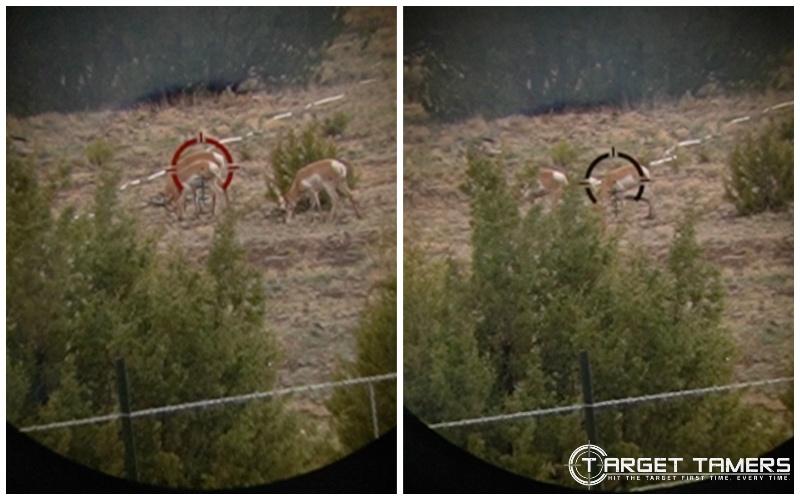
I really like the illumination knob with its intermittent off settings. I found the illumination intensity varied which is perfect for many of the different types of environment and lighting conditions you can find yourself in.
Honestly, the new upgrades really put the Tomahawk II into the mid-range class. For the money, there’s a lot to gain. This is by far one of the best 1-6x LPVO scopes you must consider if CQB, SFP, and 1x ease is your speed.
5. Vortex Strike Eagle SFP – Best for CQB
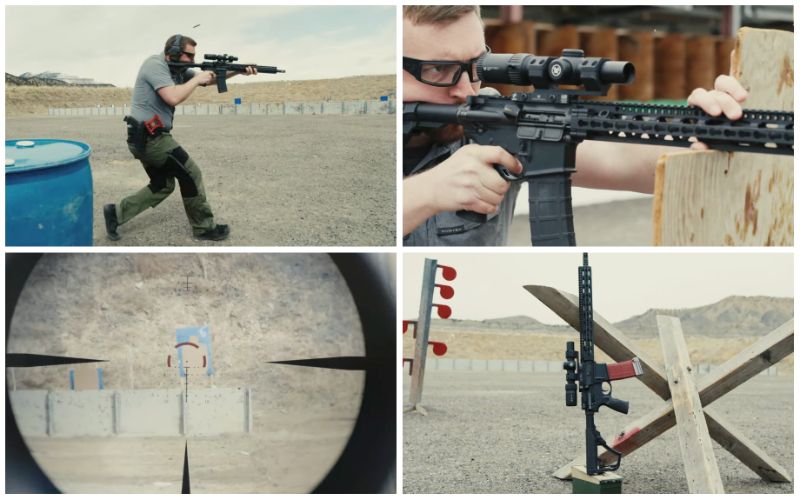
The Strike Eagle is an extremely popular riflescope series that includes a 1-6x LPVO. It’s designed for rapid CQB but can also go the distance to 650 yards. With a nitrogen-puged and O-ring sealed tube and an ArmorTec exterior lens coating, the Strike Eagle is ready to work in all conditions.
Pros:
- SFP scope
- AR-BDC3 reticle
- Partial illumination
- Low capped turrets
- Accessories included
Cons:
- Tight eyebox
Though similar to the Strike Eagle 1-8x that I field-tested, it does have a slightly different reticle that’s in the SFP that makes a big difference. Due to the reticle’s location, it’s not tiny at 1x like the reticle in the FFP version. Yes, it behaves more like a red dot, but it’s still very small. The SFP model has the advantage of a highly visible reticle throughout the entire power range.
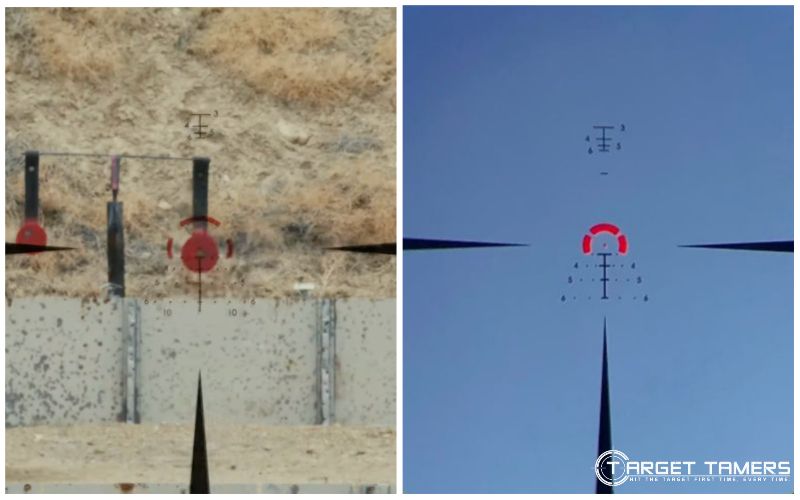
Speaking of the actual reticle, the Strike Eagle 1-6x has the AR-BDC3 with an illuminated 1 MOA center dot and segmented circle. The BDC portion isn’t illuminated, just the center. It keeps things clean and simple, and Vortex has pretty good illumination so that it’s visible in almost all conditions.
It doesn’t come with flip-up caps like the FFP model does, but it still comes with a sunshade and screw-in (not band) throw lever. With eye relief similar to most other LPV scopes of 3.5”, it does get tight at max mag. Even though this Strike Eagle can be put through its paces for various applications, I’d recommend it for hunting, home defense, and range use.
6. Primary Arms SLx SFP Gen III ACSS – Best SFP 1-6x
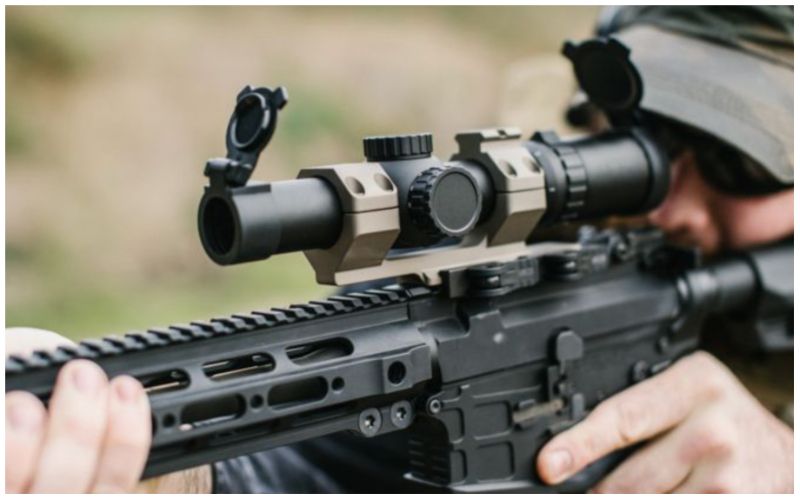
The Primary Arms SLx 1-6x24 SFP Gen III scope with the ACSS reticle is one of the best LPVO scopes for performance and cost. It’s a highly rated LPV that is great for both CQB, going the distance, home defense, and more.
Pros:
- Price
- ACSS reticle
- SFP reticle
- Compact
- Versatile
Cons:
- Not daylight bright
The SLx 1-6x Gen III scope is one that I’d say is great for those with good eyes. Why? The ACSS reticle is in the second focal plane, so it stays the same size from 1x power through to 6x power. This is a good thing since it remains highly visible at 1x. Honestly though, from what I’ve seen with the ACSS reticle is that it’s larger at 1x (FFP or SFP) than it is to other LPV reticles at 1x.
However, the chevron is very fine, so it might be hard to see for older eyes or those who are new to the ACSS reticle. Good thing it has illumination, and it makes a big difference, but it’s not daylight bright. It really is intended for low light conditions and the entire reticle illuminates.
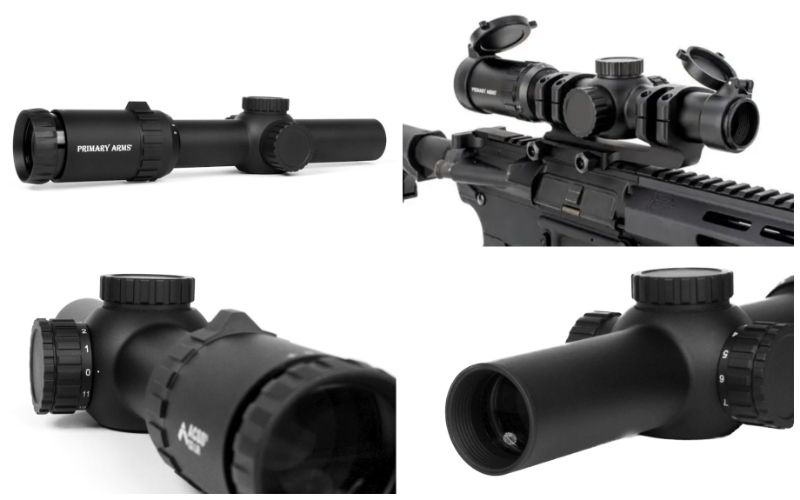
The SLx 1-6x is 10” long, weighs 16.9 oz, and according to Primary Arms, is more compact than its predecessors. The eye relief is stated at 3.5-3.5”, and though some say it can be finicky at max power, it’s enough to get to work.
At a cheaper price point than the GLx model, an SFP reticle, and solid performance, the SLx has a place in the LPVO market.
7. Sig Sauer Tango MSR – Best for Included Mount
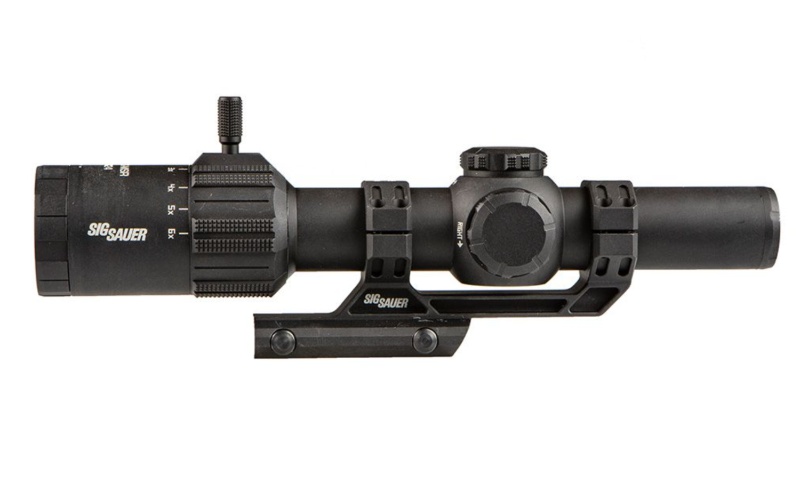
That’s right! The Tango MSR 1-6x LPVO comes with an included cantilever mount. It’s not the only accessory of note that is included. At a cost that could be considered expensive for an entry-level scope, it’s actually a value buy with all that it comes with.
Pros:
- 11 illumination settings
- BDC6 reticle
- Flip-back lens included
- ALPHA-MSR1 mount included
- Integrated throw lever included
- Finish
Cons:
- No intermittent off illumination
The Tango MSR is an entry-level scope and is made for casual applications when all the fixings are required out of the box at an affordable price point.
Though it has 11 brightness settings, there are no intermittent off settings. You must be conscious about manually turning it off to preserve battery life.
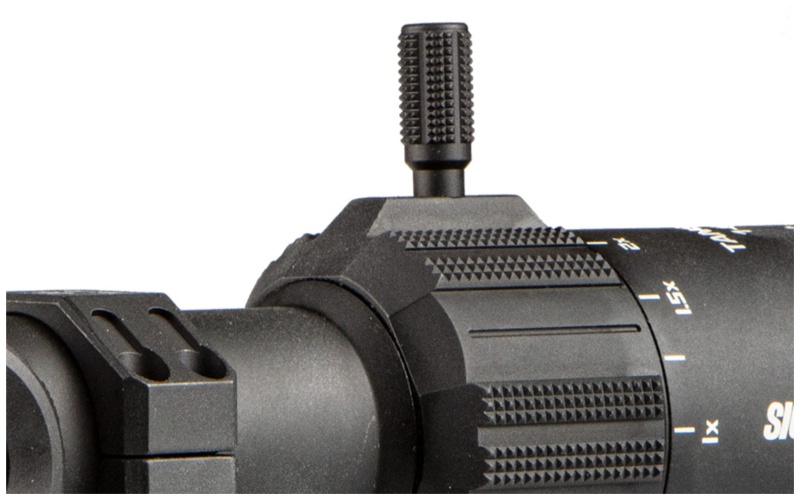
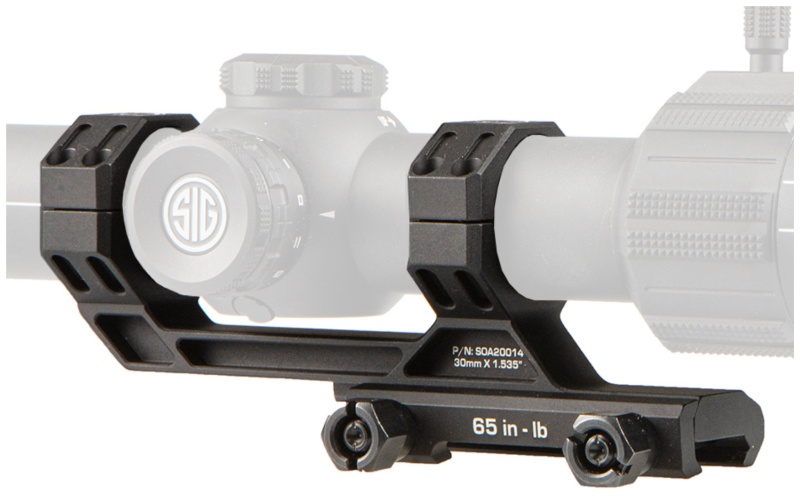
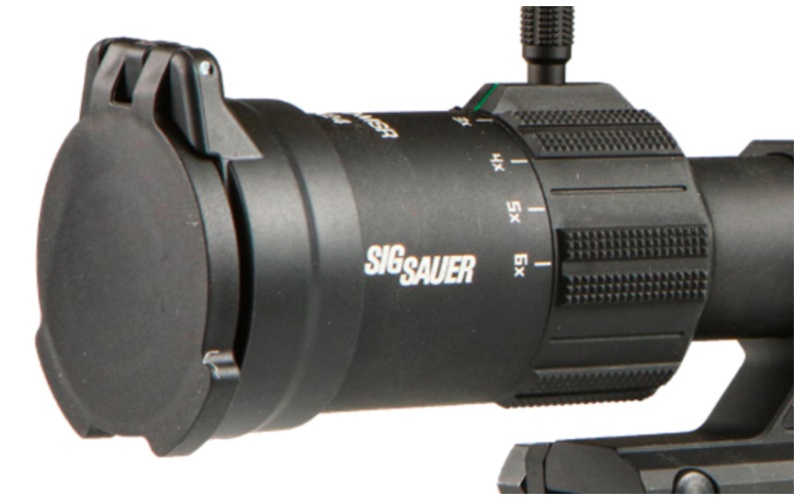
The finish is very easy to mar. It does show scratches, smudges, and any type of damage rather easily. If you’re into it, a Cerakote coating could preserve the finish if you feel so inclined to do that even though it has no bearing on scope functionality.
The eye relief is stated to be 3.9” but it's unforgiving after 4x magnification requiring a very consistent position inside the eyebox. This is usually the case with LPVO scopes, so it’s to be expected.
With reasonable glass performance and a very easy to use BDC6 reticle, the Tango MSR is a good buy. It’s hard to find a quality LPVO that comes with a cantilever mount, scope caps, and a throw lever all as included accessories. That’s where the value comes from!
8. Monstrum Alpha LPVO – Best Budget
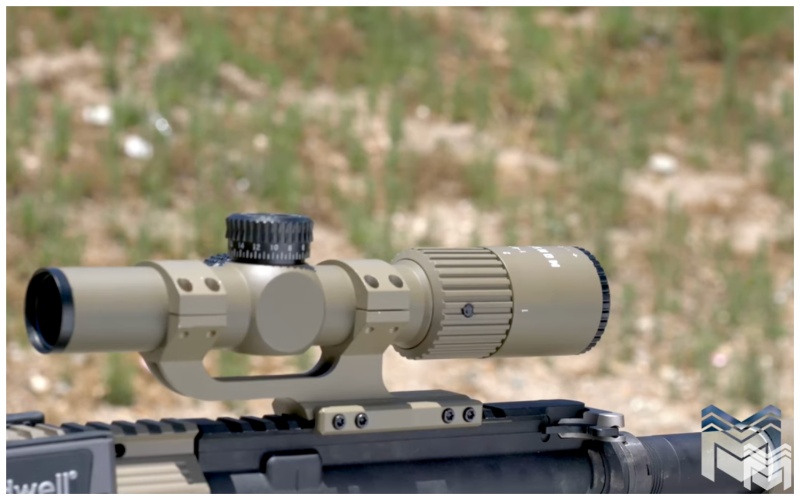
The Monstrum Alpha Series LPVO with a FFP reticle is one of the brand’s most popular scopes. For the money, it’s also one of the cheapest 1-6x scopes available.
Pros:
- Price
- FFP reticle
- Custom Type-C reticle
- Flip-up caps included
- Fog/waterproof
Cons:
- Non-illuminated
In general, this is about as budget as it gets for an LPVO scope. The Alpha has the popular 1-6x power range, is 10.2” long, and weighs 16 oz. It’s on the lightweight end for an LPV too.
With the Custom Type-C reticle, it has BDC and windage for holding over. Since the reticle is in the FFP, it gets larger as magnification is increased, and at this price point, it’s a feature that’s not typically seen.
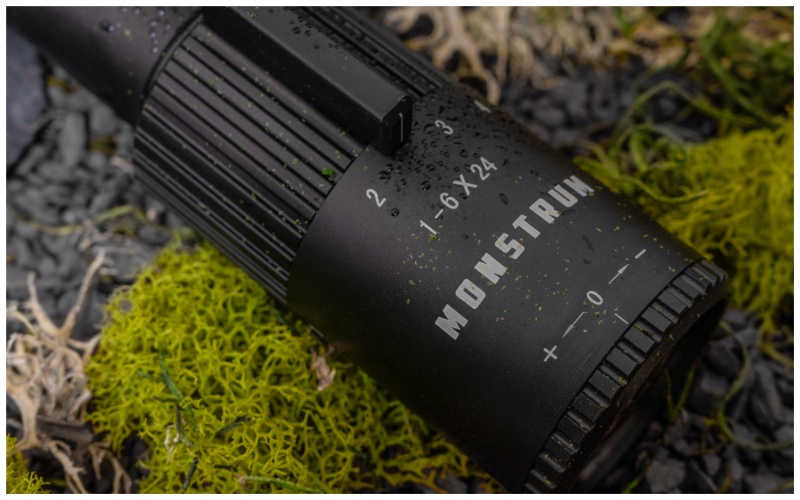
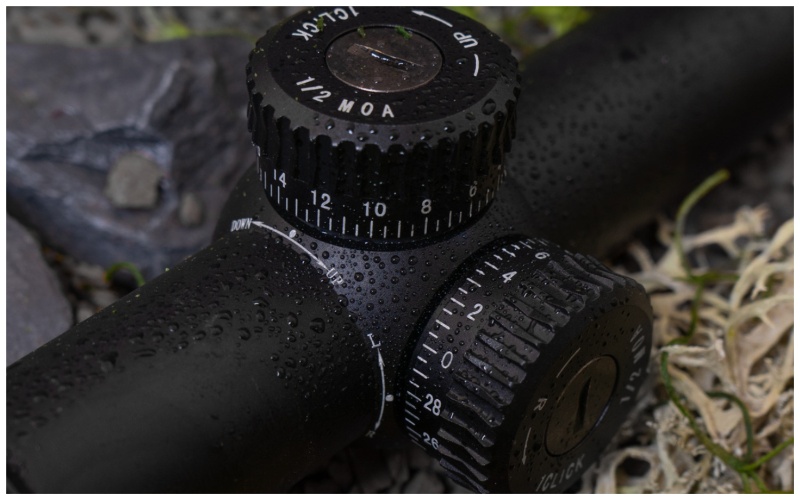
The only downside is that it’s the non-illuminated version. At 1x, the reticle does get small, but if you have great vision and are mostly using it for target shooting, it will work. In fact, I recommend this scope for recreational applications like range shooting, plinking, and perhaps some small game like rabbits, squirrels, and other pests.
Flip-up caps are included though you will need to purchase your own 30mm mount. It has FMC coatings, but I expect that the glass performance will just be okay as it’s still a budget entry-level scope. A nice touch to the build integrity is that it’s also nitrogen-purged for fogproof benefits which means it’s also waterproof.
For the money, it’s a cheap scope if you want the 1-6x24 configuration with a BDC reticle in the FFP.
A Guide to Choosing the Best 1-6x Scopes
Cost
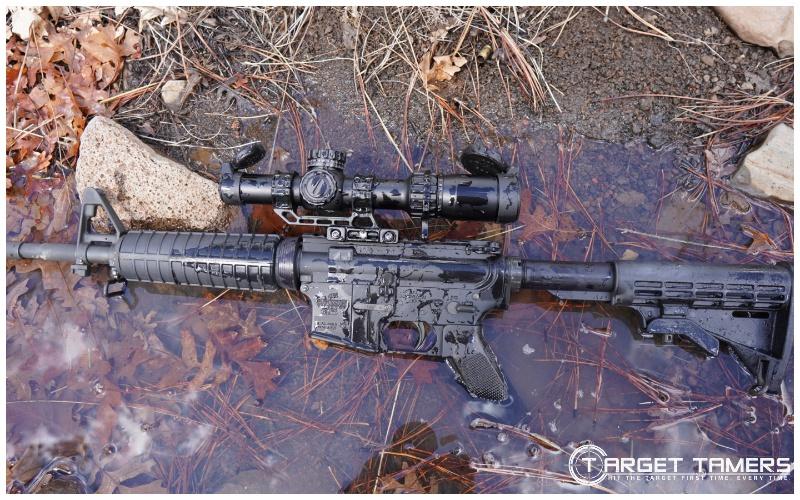
The cost for a 1-6x LPVO riflescope starts at approximately $100 and can cost upwards of $2000. Some high-end 1-6x scopes include the Swarovski Z6i, Leupold Patrol 6HD, Trijicon VCOG 1-6x, and more. The scopes with the highest ratings tend to have price points around $300-$600.
| Product | Key Features | Price Range |
|---|---|---|
| Leupold VX-6HD | Best for Hunting | Under $1300 |
| Primary Arms GLx | Best FFP 1-6x LPVO | Under $600 |
| Vortex Viper PST Gen II | Best for AR-15 | Under $600 |
| Swampfox Tomahawk II | Best Under $500 | Under $500 |
| Vortex Strike Eagle SFP | Best for CQB | Under $400 |
| Primary Arms SLx | Best SFP 1-6x LPVO | Under $300 |
| Sig Sauer Tango MSR | Best with Included Mount | Under $400 |
| Monstrum Alpha Series | Best Budget | Under $150 |
1-6x Magnification
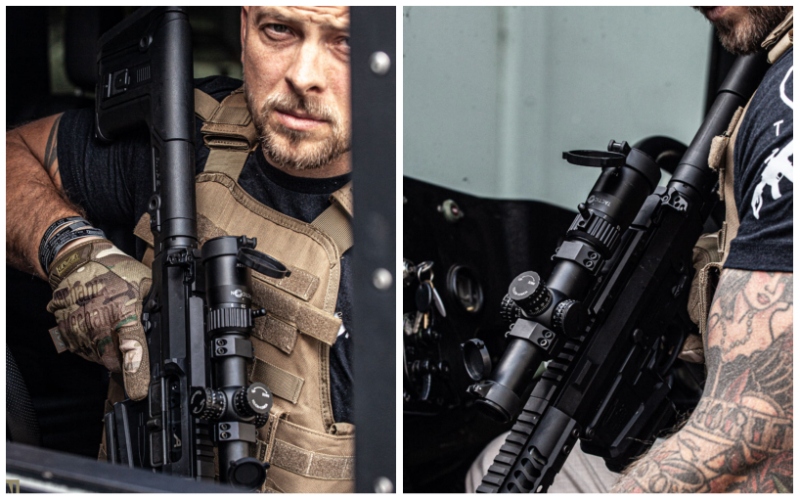
An LPVO is a low power variable optic sometimes referred to as an LPV scope. These types of riflescopes are designed for rapid use at close-range distances, usually those qualifying as CQB ranges – inside 100 yards. The benefits include fast engagement with a wide FOV at 1x.
So, why not opt for a red dot sight? The other benefit of LPVO scopes is that they offer variable magnification. You’re not stuck with the fixed power of a magnifier running behind a red dot sight. To go the distance with the same, simple, and fast optic makes it a desirable platform for law enforcement, home defense, and even hunting.
| Product | Magnification | Objective Diameter |
|---|---|---|
| Leupold VX-6HD | 1-6x | 24 mm |
| Primary Arms GLx | 1-6x | 24 mm |
| Vortex Viper PST Gen II | 1-6x | 24 mm |
| Swampfox Tomahawk II | 1-6x | 24 mm |
| Vortex Strike Eagle SFP | 1-6x | 24 mm |
| Primary Arms SLx | 1-6x | 24 mm |
| Sig Sauer Tango MSR | 1-6x | 24 mm |
| Monstrum Alpha Series | 1-6x | 24 mm |
Specifications
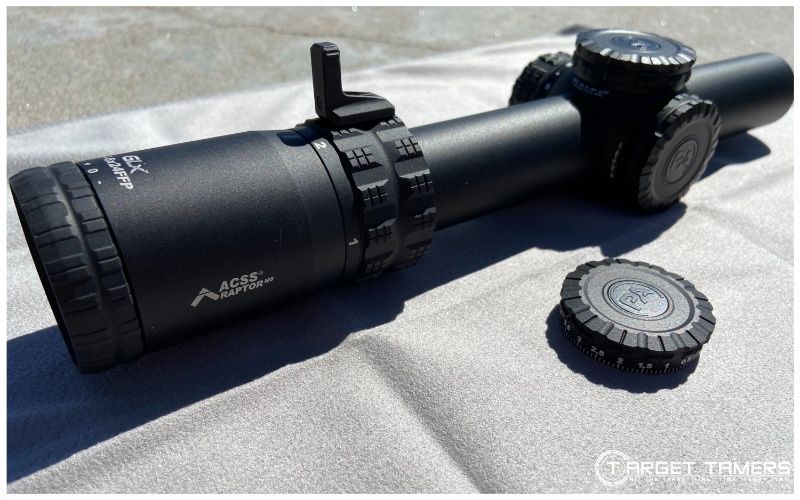
Overall, there are vital specifications to know before purchasing just any 1-6x scope. Some of these specs are the cause of dissatisfaction with an LPVO. These include eye relief, FOV, and the adjustment value of the turrets.
A big advantage of an LPV is the wide FOV that can be obtained at 1x magnification. This provides binocular vision shooting with two-eyes open and enhances situational awareness.
The eye relief is a big deal because LPVOs are notorious for having a tight eyebox at max power. This reduces speed since it takes time to find the sight picture without vignetting (shadowing). Longer eye relief is good and can be more forgiving at max power, but also reduces the risk of scope bite with heavy recoil setups.
Many 1-6x scopes have turrets with 0.5 (1/2) MOA adjustments. This seems to be an industry standard for an LPV. However, there are some models that offer even finer adjustments with 0.25 (1/4) MOA and 0.1 (1/10) MIL adjustments for even more precision.
| Product | Field of View @ 100 Yards | Eye Relief | Adjustments |
|---|---|---|---|
| Leupold VX-6HD | 120.9-19.2 ft | 3.7-3.8 inches | 0.25 MOA |
| Primary Arms GLx | 104.7-18.3 ft | 3.5-3.3 inches | 0.1 MIL |
| Vortex Viper PST Gen II | 112.5-18.8 ft | 3.8 inches | 0.5 MOA |
| Swampfox Tomahawk II | 120.43-20.9 ft | 3.5-3.4 inches | 0.5 MOA |
| Vortex Strike Eagle SFP | 116.5-19.2 ft | 3.5 inches | 0.5 MOA |
| Primary Arms SLx | 110-19.30 ft | 3.5-3.3 inches | 0.5 MOA |
| Sig Sauer Tango MSR | 124.8-19.6 ft | 3.93 inches | 0.5 MOA |
| Monstrum Alpha Series | 103.2-16.1 ft | 4.5-4 inches | 0.5 MOA |
Reticle

The type of reticle a 1-6x will determine a lot about effective range, ease of holding over, and visibility in various conditions. There is a wide variety of duplex style reticles to keep things simple for CQB but some also include holdovers for drop and wind along with a stadiametric rangefinder.
Most LPV scopes have illumination, but some do not. The illumination system will vary between push button and knobs. The most common type are knobs with intermittent off positions as a mid-range feature and motion sensor technology as a high-end feature. These LPVO scopes are almost always powered by a CR2032 battery.
| Product | Reticle | Focal Plane | Illumination Settings | Intermittent Off | Battery Type |
|---|---|---|---|---|---|
| Leupold VX-6HD | Firedot Duplex | SFP | 8 | No | CR2032 |
| Primary Arms GLx | ACSS Raptor M6 | FFP | 10 | Yes | CR2032 |
| Vortex Viper PST Gen II | VMR-2 | SFP | 10 | Yes | CR2032 |
| Swampfox Tomahawk II | Guerrilla Dot BDC | SFP | 12 | Yes | CR2032 |
| Vortex Strike Eagle SFP | AR-BDC3 | SFP | 11 | No | CR2032 |
| Primary Arms SLx | ACSS | SFP | 11 | No | CR2032 |
| Sig Sauer Tango MSR | BDC6 | SFP | 11 | No | CR2032 |
| Monstrum Alpha Series | Custom Type-C | FFP | No | N/A | N/A |
Size & Weight
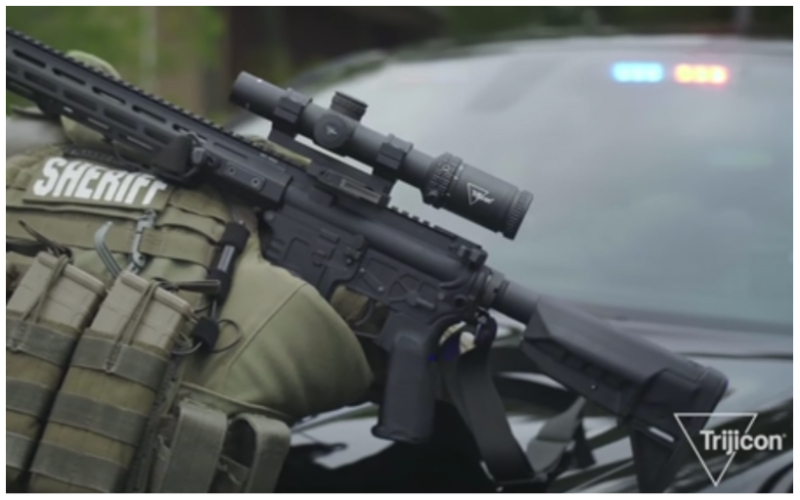
In general, a LPVO will weigh more than what you think it will. They’re generally compact in the 9-11” length range but have weights in the 16-24 oz range. The 1-6x configuration lands in the middle of the LPVO range, so they generally come in around 16-18 oz.
Pay attention to weight as after you’ve added a laser, flashlight, and other accessories to your rifle, you’ve added quite a bit of heft at the end of the day. What are you using your rifle and scope for? Is it a carry-around rig or are you prone or stationary at the bench?
| Product | Length | Weight |
|---|---|---|
| Leupold VX-6HD | 10.8 inches | 16.2 oz |
| Primary Arms GLx | 10.25 inches | 21.3 oz |
| Vortex Viper PST Gen II | 10.83 inches | 22.7 oz |
| Swampfox Tomahawk II | 10.6 inches | 20.2 oz |
| Vortex Strike Eagle SFP | 10.4 inches | 18.5 oz |
| Primary Arms SLx | 10 inches | 16.9 oz |
| Sig Sauer Tango MSR | Unknown | 18.5 oz |
| Monstrum Alpha Series | 9.4 inches | 14 oz |
Included Accessories

On average, 1-6x scopes require more than just standard caps to help with scope longevity. They need a few more accessories, which can be pricey, to improve scope effectiveness and preserve build integrity. Fortunately, many manufacturers are generous with what is included in the box.
| Product | Included Accessories |
|---|---|
| Leupold VX-6HD | Reversible throw lever, Alumina flip-up caps |
| Primary Arms GLx | Interchangeable throw lever, exposed turret, threadlocker, oversized microfiber cloth |
| Vortex Viper PST Gen II | Sunshade |
| Swampfox Tomahawk II | Throw lever, flip-up caps, oversized microfiber cloth |
| Vortex Strike Eagle SFP | Throw lever, sunshade |
| Primary Arms SLx | Integrated power fin, flip-up caps |
| Sig Sauer Tango MSR | Integrated throw lever, flip-back caps, cantilever mount |
| Monstrum Alpha Series | Integrated throw lever, flip-up caps |
Warranty

The warranty on any optic must be considered to ensure confidence in the purchase and future protection coverage of the optic. Though many manufacturers have upgraded their warranties to provide competitive coverage in most recent years, they’re not all equal. Conditions apply.
| Product | Warranty | Features |
|---|---|---|
| Leupold VX-6HD | Lifetime Guarantee | Lifetime, no proof of purchase required |
| Primary Arms GLx | Lifetime Warranty | Lifetime, no proof of purchase required, normal usage damage to scope coverage |
| Vortex Viper PST Gen II | VIP Warranty | Unconditional, unlimited |
| Swampfox Tomahawk II | Lifetime Warranty | Lifetime, serial # or proof of purchase required, 10-year warranty on illumination |
| Vortex Strike Eagle SFP | VIP Warranty | Unconditional, unlimited |
| Primary Arms SLx | Lifetime Warranty | Lifetime, no proof of purchase required, normal usage damage to scope coverage |
| Sig Sauer Tango MSR | Infinite Guarantee | Unlimited, lifetime, fully transferable |
| Monstrum Alpha Series | Lifetime Guarantee | Lifetime, must show proof of purchase from official authorized dealer or Monstrum |
FAQ's
On average, an LPVO is good for CQB usually inside 100 yards. However, a 1-6x configuration can be good for as far as 600 yards. The effective range is dependent on multiple things from the reticle to the cartridge. However, based on 3x power for every 100 yards, 200 yards is the standard.
Stretching the distance for 600-800 yards plus can be done but then other scope issues may need to be addressed such as eye relief, tight eyeboxes, lost clarity and resolution at max 6x magnification.
In general, a 1-6x LPVO can be a great scope for hunting. The 1-6x configuration can be used on various hunts but is mostly desired for timber, mountain brush, and where the average shot is, say, less than 200-300 yards.
Antelope in range of 1-6x LPV - Image by Tina Fa'apoi (Own Work) for Target Tamers
A 1-6x LPVO can be a great scope for a 22LR rifle. From plinking to small game hunting, the 22LR has a lot of uses. With a low power riflescope, a rapid transition from 40 yards to 200 yards with variable magnification is achievable.
With 3x scopes on turkey shotguns and EOTech holographic sights surviving recoil on a slug gun, there’s no reason you couldn’t try a 1-6x LPVO on a shotgun. Factors to consider would be weight, low-profile mounting, zero retention from recoil, and enough eye relief.
A quality 1-6x scope on a shotgun can provide some magnification for those with older eyes or for distance (standard ranges for shotguns) but is low enough that it could replace a red dot sight.
Best 1-6x LPVO: Which is Best For You?

There are a lot of 1-6x lpvo scopes in the market ranging from cheap all the way to high-end, duty-grade scopes. Setting the budget will help to narrow down the options. Then looking to the glass, reticles, and specs will further make the choice easier.
There are plenty of 1-6x scopes not in this list, but if you want a broader picture of the best LPVO scopes in general, check out our recommendations – there’s plenty of those too!
Further Reading






